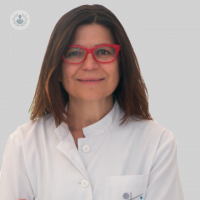Common Questions on melanoma
Written by:What is melanoma?
Melanoma is a malignant tumor on the skin that usually originates in melanocytes. These skin cells are responsible for producing melanin , a brown pigment that darkens the skin and protects it from the sun. The tumor may appear as a new lesion or as a mole that changes its appearance, shape or color. They are usually brown or black, since their cells continue to produce melanin. The main cause of the appearance of the tumor is severe sun exposure without adequate protection, which can cause burns.
Which people are more predisposed to suffer it? Can we prevent its appearance?
People with fair skin and eyes, with blond or red hair and who have difficulty in tanning, as well as those who have a large number of moles on their skin, have a higher probability of developing melanoma and should adopt prevention behaviors, since they are more vulnerable to the sun. It is important to know if there are cases of the disease in the family, because there is a genetic tendency to suffer it. In addition, having had melanoma previously increases the risk of suffering it again in the future.

All people who have a potential risk of developing melanoma should protect themselves from the sun in a responsible manner, especially in childhood. Some indications are to avoid exposure to the sun in the middle of the day, use sunscreen throughout the year, applying it frequently and appropriately, use clothing that protects from the sun, such as hats or caps, and also protect the sun. Sight with sunglasses.
How can we detect it?
The appearance of a mole or new sins or changes in a pre-existing freckle can alert on the presence of a melanoma. In this situation we should consult a specialist, who should evaluate the patient's clinical history in detail, review their injuries and their evolution. For skin analysis, non-invasive imaging techniques are used to detect the tumor, such as dermatoscopy, digital body maps, laser-focused microscopy and high-frequency ultrasound .
The only way to detect melanoma early is to examine the skin, so it is important to perform periodic self-exams and examine the skin of our relatives. In order to recognize most melanomas early, the ABCD rule applies:
- A : A symmetry
- B: Presence of irregular B ordes
- C: Diversity of C odors (white, pink, brown, bluish, black)
- D: D diameter greater than 6 mm.
The E of E volución can also be added, since the tumor usually changes in size, shape and color with time.
Does it require treatment? What techniques are there to treat it?
To prevent the tumor from spreading and reaching deep layers of the skin, which may affect internal organs, it is necessary to treat it in time. The main treatment is surgery to remove the tumor. The enlarged total excision removes the tumor and also the surrounding tissue and examines it to confirm that no cancer cells remain.
In some cases after surgery, radiation therapy may be used to destroy the remaining cells that have not been removed. Another method to achieve this is the use of immunotherapy. During the development of the tumor, the patient's immune system responds to destroy its cells. This treatment stimulates the immune response and thus our own body destroys the remains of the tumor. Chemotherapy can also be used to fight the tumor by medication.
Patients who have been treated for melanoma should have periodic examinations where their skin will be fully observed. The examination includes palpation of the area where the lesion appeared and, when necessary, the appropriate tests will be performed.


